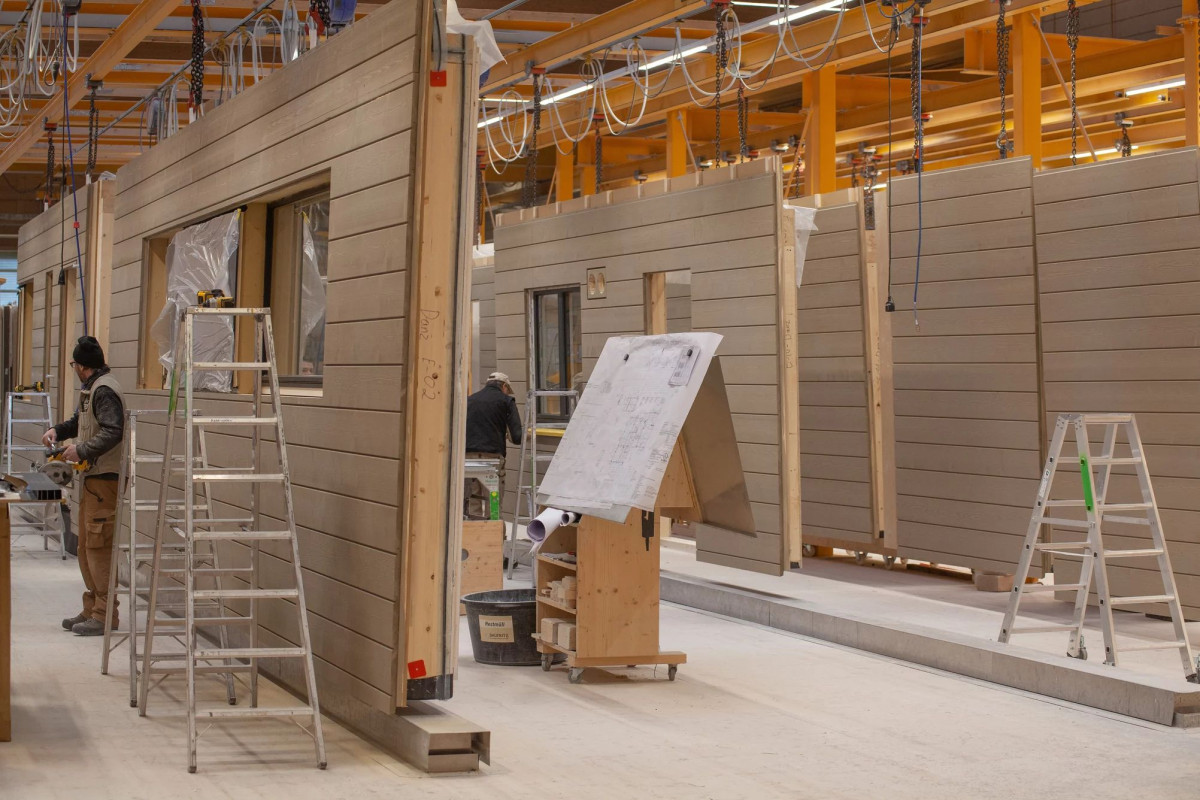National CO2 price sets Germany up for new EU emissions trading system – buildings minister
Clean Energy Wire: The buildings sector is responsible for around 15 percent of Germany's greenhouse gas emissions and has continuously missed its emission reduction targets. Energy efficiency renovations lag behind as well – what is your plan to get the sector back on track?

Verena Hubertz: The Federal Government is responsible for drawing up the cross-sector climate protection programme and has already started the process. My goal is to achieve both: good, affordable housing that is also climate-friendly. This can be achieved through a balanced mix of instruments, including an attractive funding landscape, regulatory measures and market-based instruments such as the ETS 2 [the EU emissions trading system which puts a price on emissions from transport and heating fuels]. We are preparing the new climate protection programme for the buildings sector.*
Germany is facing a housing crisis. The outgoing government had planned to build 400,000 new apartments per year, and failed to do so. What is your goal, and how can you tackle this crisis in a way that ensures climate protection?
One important measure is the “construction boost”, which we set in motion. It gives municipalities the opportunity to relax rigid regulations, shorten approval times and create living space through vertical extensions – adding storeys to buildings – and densification. Every closed building gap and every added storey in residential buildings counteracts surface sealing. Our subsidy programmes for new construction show how housing can be created that is both climate-friendly and affordable. Since 2023, we have subsidised more than 106,000 residential units. Subsidies are an important building block for reducing high financing costs. That is why we will revise and simplify the programmes.
The coalition agreement mentions that the new government wants to incentivise climate-friendly construction, use the potential of serial and modular construction, and push for the use of sustainable building materials – can you provide some details on these plans?
Right at the beginning of my term in office, I advocated three 'Ts' in the construction sector: tempo [speed], technology and tolerance. Serial, modular and systemic construction embodies these principles – it enables faster, more cost-efficient and lower-emission construction processes through industrial prefabrication. Recyclable, resource-efficient and bio-based materials such as wood, clay, and straw, as well as circular building systems, are being used in more and more projects nowadays. These significantly reduce the carbon footprint and support the transition to a climate-friendly construction sector. Through the "Roundtable on Serial, Modular and Systemic Construction," we are strengthening this approach by bringing all stakeholders together to solve problems. We will continue this work.
The aim is not only to avoid emissions, but also to identify ways in which the construction industry itself can become an active part of the solution.
Another important impetus for future construction will come from a federal research centre on climate-neutral and resource-efficient construction, which is currently being established. The aim is not only to avoid emissions, but also to identify ways in which the construction industry itself can become an active part of the solution – for example through regenerative construction, the use of climate-positive materials and consistent circular economy practices.
A topic left unfinished with the collapse of the previous coalition government included preparing urban areas against the effects of heat – does your ministry have plans to pick this back up? What about other climate adaptation plans for urban development?
People should feel comfortable in their homes and neighbourhoods – young and old alike. We want to bring more greenery into cities as a precautionary measure against increasing heat. Short distances to parks or cooling green spaces are particularly important, especially in neighbourhoods where heat accumulates and where there are few open public spaces up to now. The federal government provides 790 million euros annually in urban development funding to make cities and municipalities fit for the future. We want to gradually double this funding.
Key decisions on climate protection must be made in the buildings sector.
Germany's heating law, introduced by the previous economy and housing ministries, caused much controversy in the country and abroad. What are the biggest lessons you took from it, and how might they be applied to the coalition's plans to "abolish" the law?
The Building Energy Act (GEG) did not come out of thin air, nor was it invented by the traffic light coalition [the previous government under Olaf Scholz, named after the coalition parties' respective colours]. Key decisions on climate protection must be made in the buildings sector. In the case of existing buildings, the measures that make sense must be weighed up on a case-by-case basis. Appropriate transition periods, exemptions in cases of hardship and accompanying support schemes in the current GEG ensure, for example, that no one is overwhelmed by the new requirements.
In the work currently underway to implement the EU Buildings Directive [the EU's law to boost the energy efficiency of buildings], we are ensuring that the requirements are technology-neutral, flexible and simple. The specific options for implementation are currently being worked out jointly by the Federal Ministry for Economic Affairs and Energy (BMWE) and my ministry. In the process, it is important to exploit the leeway for technical and economic implementation. In my view, it is important that the social acceptance and economic viability of possible measures are given priority.
Another piece of EU legislation that you will likely have to implement during your time in office that is crucial for the buildings sector is the introduction of the ETS 2 – which is set to increase the price of emissions from heating with gas and oil. How will the government ensure a smooth introduction? Are there specific plans to protect vulnerable households?
We are of course in close contact with the other ministries. Most EU Member States have not yet introduced national CO2 pricing. The German emissions trading scheme will therefore contribute to a smooth transition. Affordable housing and living are, to a certain extent, public services. We are therefore keeping an eye on the possible social consequences of implementation.*
*This interview was conducted in written format, the ministry declined to elaborate further.


